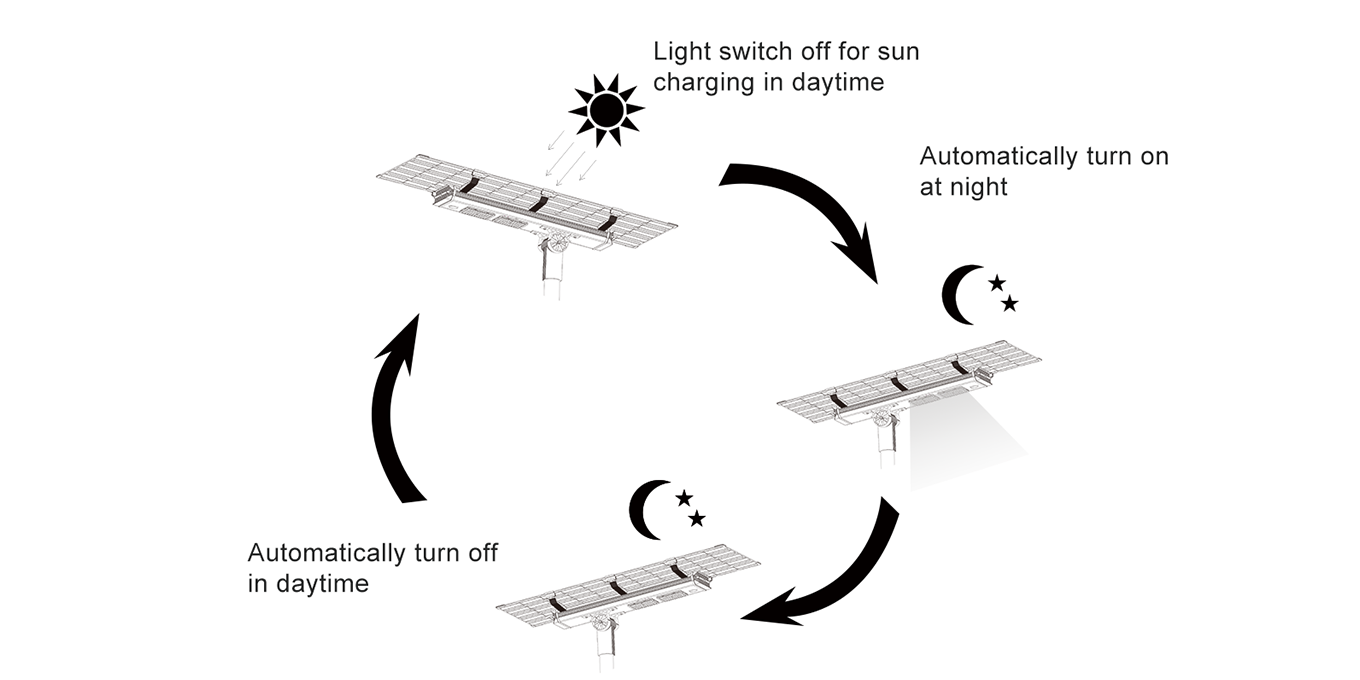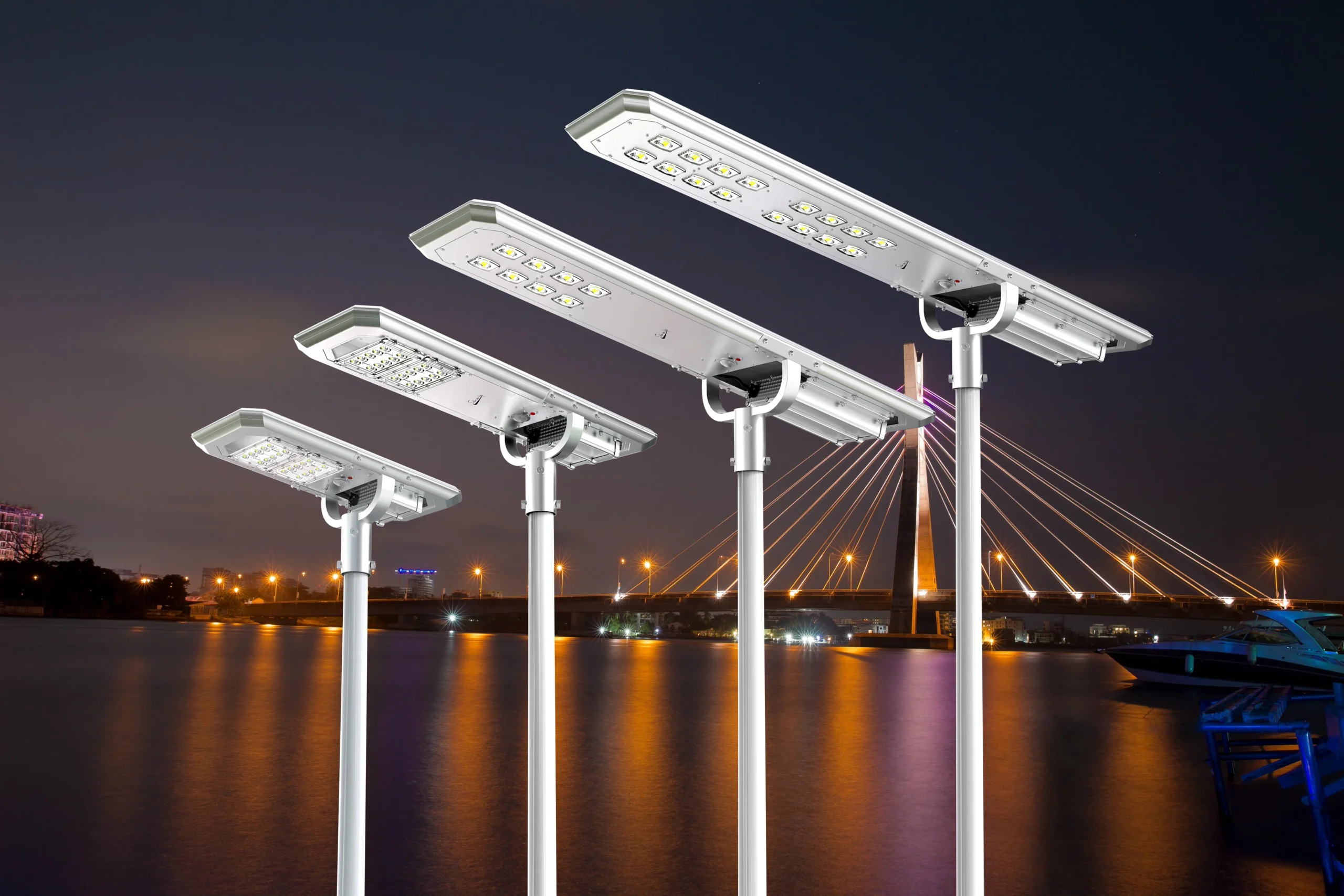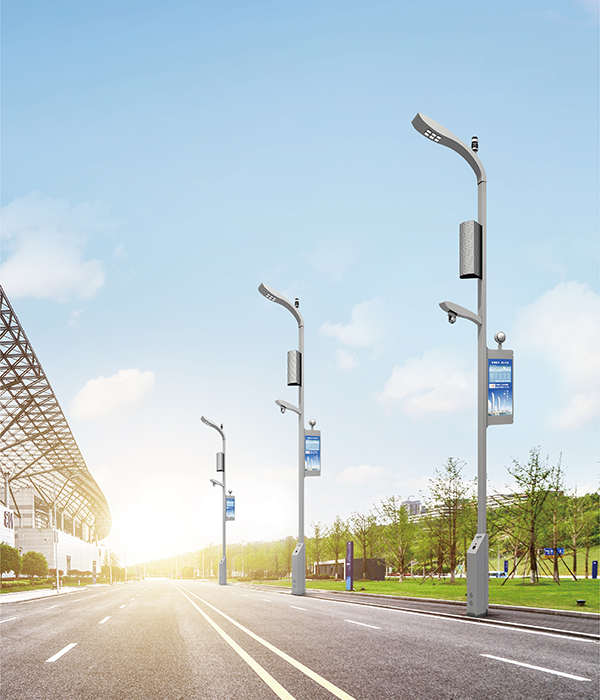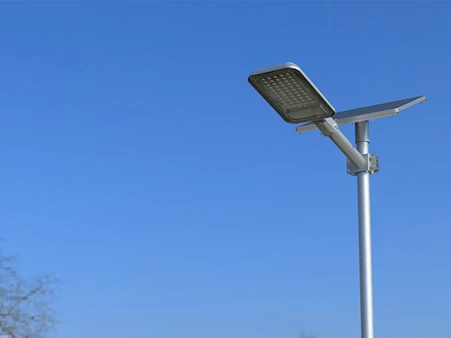Rural electrification faces three core issues: limited infrastructure, high upfront cost, and long-term maintenance. In this context, traditional street lighting becomes unviable.
The best all-in-one solar street lights solve these rural lighting challenges with an integrated, maintenance-friendly, and energy-independent design.
As someone deeply involved in the design and deployment of solar lighting systems across Africa, I’ll walk you through the essential considerations—based not on theory, but on field experience.
Why Are All-in-One Solar Street Lights Ideal for Rural Areas?
In most of the rural projects I’ve consulted on, the same pain points repeat: local authorities or NGOs want to light up schools, roads, or health centers, but the grid is unreliable or simply nonexistent. Running new cables can cost more than the lighting itself. That’s where all-in-one systems step in.
All-in-one solar street lights integrate a solar panel, battery, LED lamp, and controller into a single unit. This eliminates wiring, simplifies installation, and ensures autonomous operation. These systems are compact but powerful. They mount easily onto existing poles or walls and start working the moment sunlight hits the panel.
From a technical standpoint, they solve five fundamental rural lighting constraints:
- No trenching or electrical wiring needed
- Power autonomy for up to 3–5 days without sunlight
- Minimal maintenance with sealed lithium battery systems
- Lower risk of failure due to fewer exposed components
- Ability to scale deployment quickly across villages
From an infrastructure development view, this makes them one of the most impactful investments in last-mile public service delivery.
What Makes a Good All-in-One Solar Street Light for Rural Use?
This is the part many clients overlook: the best unit is not the most expensive one, but the one that fits the environment. Over the years, I’ve seen countless imported systems fail within a year—not because the brand was bad, but because it wasn’t built for the climate or usage pattern.

Let’s break down the key specs you need to focus on—not as a checklist, but through the lens of real-world application.
Battery storage is the first thing I assess. In Uganda’s wet season, you can have three to four consecutive cloudy days. If your light only stores one day of energy, it’s useless after a storm. I recommend a lithium iron phosphate (LiFePO₄) battery with at least 20Ah of capacity for any location without consistent sun. These batteries are more stable, support deeper discharge, and last longer in high temperatures.
Brightness—measured in lumens—is often misunderstood. More lumens doesn’t always mean better. For pathways, 1500–2000 lumens is ideal to avoid glare. For community roads, 3000–5000 lumens gives sufficient spread without overwhelming the environment. Also, make sure the light uses a lens or diffuser to evenly distribute light and avoid "hotspots."
Solar panel efficiency becomes critical when you’re dealing with limited sun hours or indirect angles (common in forested regions or hilly terrain). Panels with mono-crystalline cells and 19%+ efficiency are a must. Poor quality panels degrade faster and often lose 10–15% of performance after the first year.
Durability is non-negotiable. Look for IP65 or higher waterproofing, UV-resistant casing, and anti-rust hardware. Insects, rain, and dust are common in rural installations—especially around fields and animal areas. Systems not built for that will quickly break down or get blocked.
Lastly, intelligent controls like motion sensors or auto-dimming are essential if you want to conserve energy. In most villages, traffic is low after midnight. A light that dims to 30% and then brightens when it detects motion can stretch your lighting hours by 40% without increasing panel or battery size.
And don’t forget the human factor: installation must be easy enough for non-engineers. If it requires custom brackets, reprogramming, or special tools, it won’t scale. Stick to units with plug-and-play installation and default settings optimized for rural use.
The Best All-in-One Solar Street Lights for Rural Areas in 2025
I’ll skip the manufacturer hype and give you the practical overview you need. These are models I’ve either deployed myself or reviewed in customer settings. I evaluated them for reliability, brightness, power storage, and ease of maintenance.

| Model | Lumens | Battery (Ah) | Panel Type | Sensor | Est. Cost (USD) |
|---|---|---|---|---|---|
| HuaweiLight V5 | 4800 | 28 | Mono | PIR+Remote | $140 |
| SolarMax R80 | 4000 | 25 | Mono | PIR | $130 |
| SunBright AIO30 | 3000 | 20 | Poly | PIR | $100 |
| EcoLite Rural | 2000 | 18 | Mono | None | $80 |
| LumaLight Pro S | 5000 | 30 | Mono | Smart Timer | $160 |
Here’s my take:
- HuaweiLight V5 is my go-to model for village centers, schools, or hospitals. It balances power and battery life with user-friendly features like remote control and timed dimming.
- SolarMax R80 is reliable for dirt roads or hilly areas, where exposure is good but power needs vary.
- SunBright AIO30 works best in dry regions with predictable sun. Avoid this model in cloudy, humid areas.
- EcoLite Rural is suitable only for pathways or home use. It’s budget-friendly but lacks intelligence and resilience.
- LumaLight Pro S is a solid option for municipal-scale deployments, though its smart system requires tech setup.
Each of these has specific use cases. The worst mistake is buying one type for everything. Mix and match based on local needs.
What Are the Broader Benefits of These Systems?
This is about more than just light. Every unit you install changes a pattern in a community. People close their shops later, children study more, roads become safer.
More technically, solar street lights are a decentralized power solution—which means you’re not just installing lights, you’re building energy access. Maintenance costs drop dramatically over five years compared to grid-based lights. There’s no power bill. No fuel refill. No cable theft.
For local governments and contractors, these systems also offer predictability. Once installed, they just work. That reliability is priceless in areas where downtime can take weeks to resolve.
How Should You Choose the Right System for Your Project?
Here’s how I do it when advising clients:

- Measure your lighting zones. Calculate the total road/path length, number of poles needed (typically spaced 20–30 meters), and average daily usage.
- Match lighting needs to area type. Village roads need 3000+ lumens. Walkways or home areas can use 2000 or less.
- Assess the climate. In cloudy or mountainous areas, increase battery capacity by 25%. Use mono panels only.
- Set a unit cost ceiling. Decide if you want the $80 quick-fix or the $140 long-term performer. Don’t try to get both.
- Verify supplier support. Can they deliver consistent stock? Do they offer installation kits? Can they help if 10 lights fail after 12 months?
If you're deploying across multiple villages, standardize your models to make spares and maintenance easier. And always test one unit first before buying in bulk.
Final Thoughts: Which Light Do I Recommend for Rural Projects?
For most rural deployments I’ve worked on, the HuaweiLight V5 strikes the best balance of affordability, durability, and user control. It's not the cheapest, but in my experience, it's the most cost-effective over five years.
If you’re lighting long roads or larger institutions, scale up to LumaLight Pro S. If budget is the only concern, SunBright AIO30 or EcoLite can hold their own—but only in predictable weather zones.
No matter which model you pick, the key is not the product—it’s understanding the problem you're solving and picking the light that solves your version of it.
Conclusion
All-in-one solar street lights are more than just lights. They’re infrastructure in a box—ready to serve areas forgotten by the grid. Choose wisely, and you can bring years of light to places that have waited too long in the dark.







